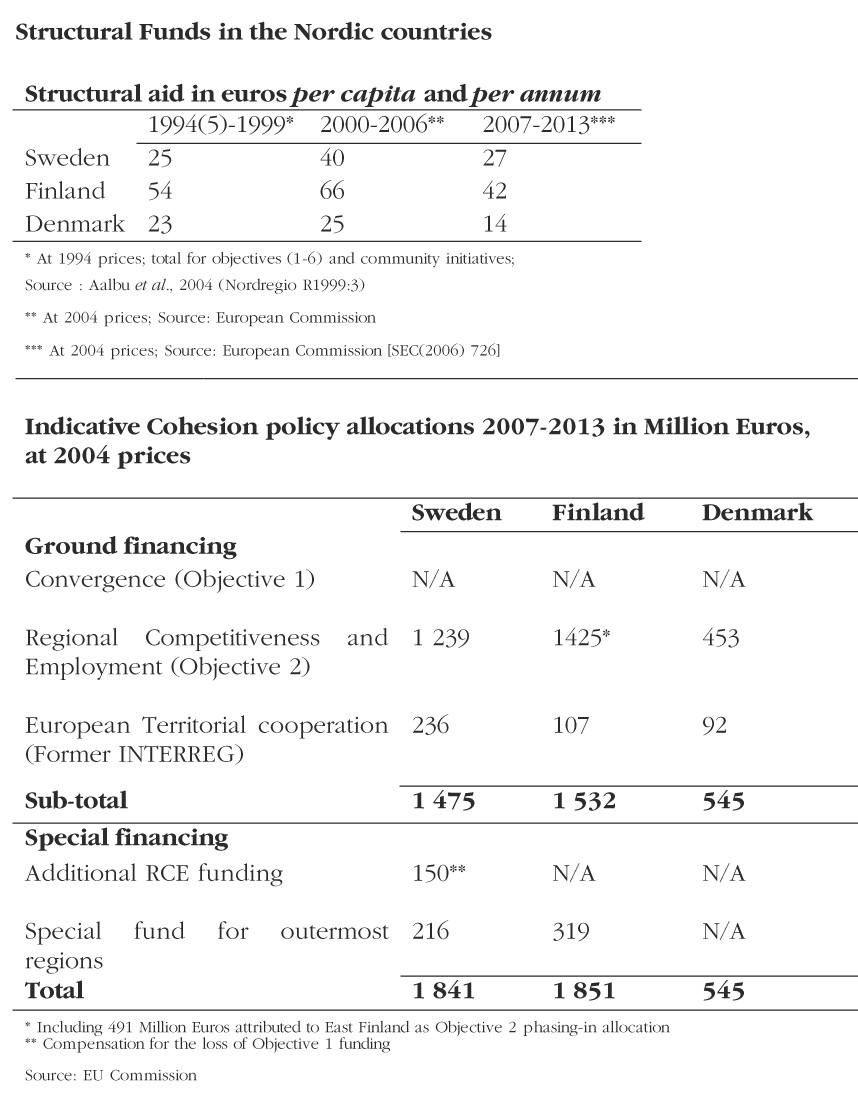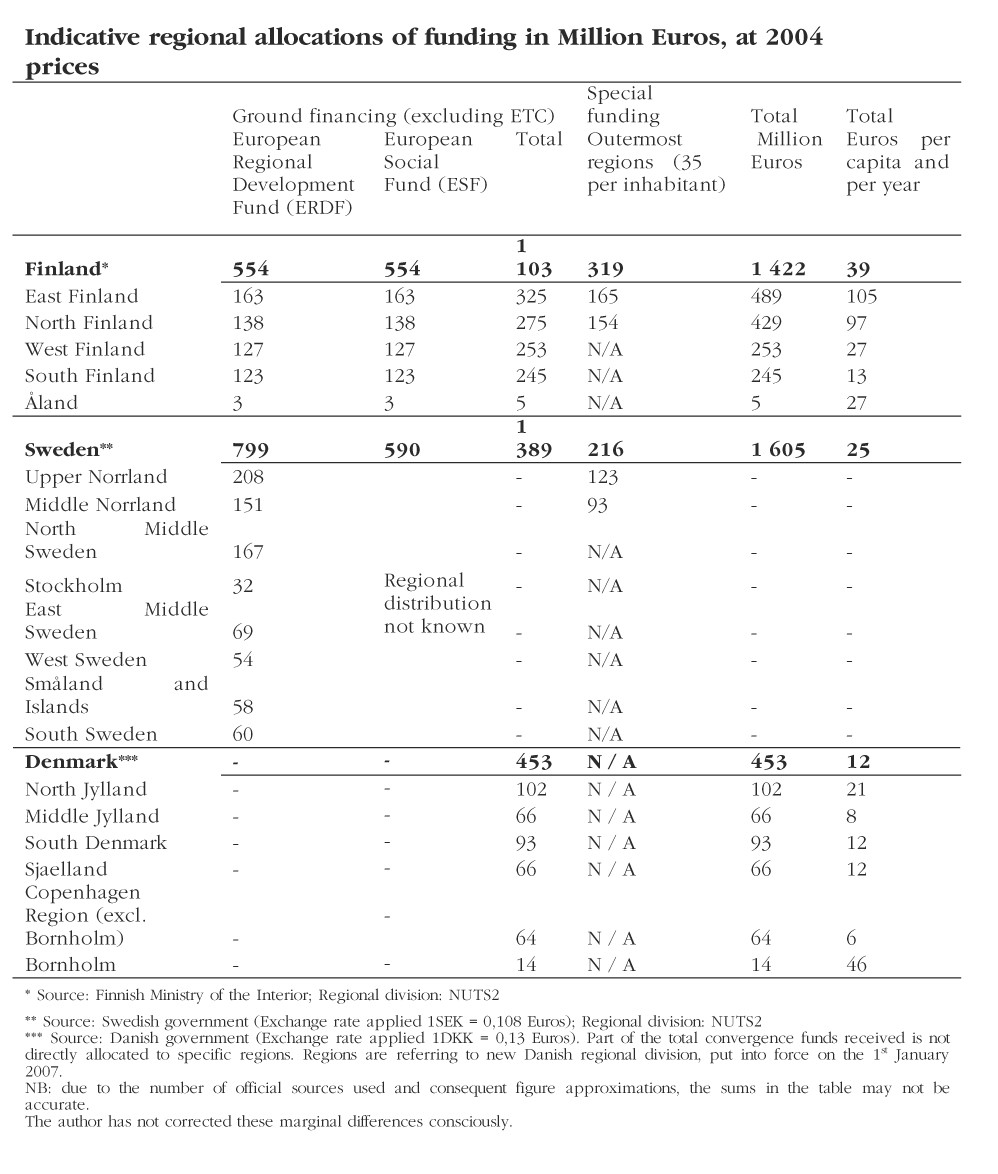For the next budget-period, Finland will receive, per annum, 42 euros per capita. This figure is rather high given that the main parameter for the allocation of Objective 1 (convergence) funds in the 2007-2013 period will be based, predominantly, on the level of regional GDP per capita. That is to say, on a principle that primarily benefits the 10 new EU Member States.
It is also worth noting that the regions of East Finland (Itä-Suomi) remained eligible for temporary relief as a 'phasing in' region, implying a progressive decrement in funding until 2013, although Eastern Finalnd will actually receive the more advantageous 'phasing out' benefits.
Sweden, Finland, and Denmark are, as EU Member-States, eligible for structural aid in the framework of the EU Regional Policy. When entering the EU in 1995, Sweden and Finland had the specificity of their northernmost regions legally recognised. Therefore, these countries initiated the creation of a specific structural fund objective, Objective 6, aiming at the 'promotion of development in regions with exceptionally low population density'. This objective was to prove particularly beneficial to Finland.
In the current programming period (2000-2006) the aid received by Sweden and Finland increased substantially compared to the previous period, while Denmark aid levels remained stable.
The reason for this increase was that the northernmost Nordic regions became eligible for the more lucrative Objective 1 assistance. The argument here was that such regions needed specific help in meeting the challenges imposed by their harsh climatic constraints and their remoteness from national and European markets, as well as in addressing the constraints imposed by their specific settlement patterns.
The funding allocated to Sweden and Finland for the period (2000-2006) was 829 million euros and 1049 million euros respectively accounting for one third of Sweden's, and one -half of Finland's received aid.
The agreement reached on the EU budget, in December 2005, for the period 2007-2013 enabled the allowance of lump sums, in respect of Cohesion Policy Funds, to be allotted to each EU Member State. On the other hand, no Nordic region is now eligible for Objective 1 funding. All Nordic regions, with the exception of East Finland eligible for Objective 2 'phasing-in' assistance, are however eligible for Objective 2 (Regional Competitiveness and Employment) allocations.
The new EU budget agreement also stipulates that Sweden is eligible for additional Objective 2 funding, as a compensation for the loss of its Objective 1 funding status. Finally, the northernmost regions of Sweden and Finland, defined in the Accession Treaty, are still been granted a 35-euros per capita and per annum fund given their territorial specificity.
In the new EU budget (2007-13), Brussels, with the further approval of the Member States, has settled on the lump sums that each Member State will receive over the seven -year programming period. The division of this financial envelope is, however, the responsibility of the national governments. Previously, such decisions were rather more heavily influenced from Brussels.
The Finnish government has already made public the indicative division of these funding arrangements, at the level of NUTS2 regions. In Sweden, only the indicative division of the 800 million euros allocated from the European Regional Development Fund (ERDF) has been published by the government. See: En nationell strategi för regional konkurrenskraft och sysselsättning 2007-2013 (National Strategy for Competitiveness and Employment). The further division of the nearly 600 million Euros allocated by the European Social Fund (ESF) will be decided upon later this year.

Click to view larger image.

Click to view larger image.
For more information:Finnish Ministry of the Interior
http://www.intermin.fi
Swedish Ministry of Trade and Industry
http://www.regeringen.se
Danish government
http://www.oem.dk
EU Regional Policy Directorate General
http://ec.europa.eu/regional_policy